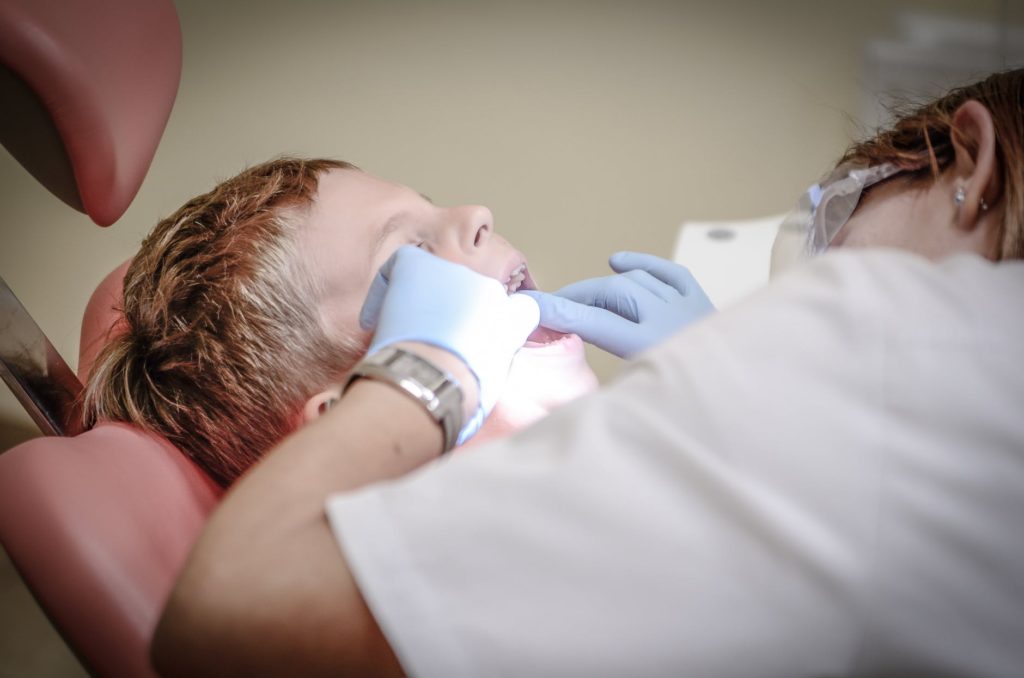If you start to notice a shift in your teeth or have an issue with your bite, your dentist may recommend the need for braces. Whether braces are an option being presented to you or if you have been newly fitted with them, you need to know what you should expect and how to go about caring for them.
What Exactly Are Braces?
Braces come to us from a specialist doctor known as an orthodontist via facilities such as the Dental Room. This field of dentistry is offered as a means to treat issues with the position of the teeth and jaws. Various bite issues require orthodontic treatment. One of these is malocclusion or bite misalignment with the most common forms in this category is either an underbite or an overbite.
Spacing issues, crowding, crooked or missing teeth, as well as open bite are also possible occurrences when teeth are growing in. These are reasons for patients to develop esteem issues not to mention problems with smiling, eating, and speaking. These many forms of bite issues are always met with a solution by your dental provider.
Braces have been developed as a way to bring the jaw and teeth into the proper alignment allowing for a high satisfaction rate among those suffering from malocclusion issues with good results.
A bite problem may be something that you take notice of on your own, or your dentist may need to point it out to you. Once there is a diagnosis, there are lots of options as far as braces.
Types of Braces
There are more options for braces available than ever before with many wondering which would be the best choice for them. Read here for the different types of braces. This would be dependent on your specific price point to the appearance that you prefer. The pros and cons of each variety of braces can assist you in choosing which version will suit you the best.
**Traditional braces in metal. These are the classic braces most think of when hearing the term. This type shifts alignment through the use of metal brackets that are attached to the front of the teeth. An archwire guides the teeth into the new bite position.
Elastic ties are used with some braces to support the tooth movement, while self-ligating braces replace the elastic ties with custom-made clips.
Patients who may be allergic to nickel may have a reason for concern with the metal that is used in the traditional braces. This is not a reason to panic because alternative options are available including gold-plated stainless steel as well as a titanium version. You must let your dental provider know of any metal allergies before braces are being fitted.
Pros: The metal braces offer a few fun color options for the kids. They are usually the fastest-acting among the choices and at the lowest price point.
Cons: This is the least discreet among the choices with the potential for white calcification developing around the brackets.
**Clear or ceramic braces. The choice is similar in appearance to that of metal braces with one major difference being that they are clear or rather match an individual person’s teeth. The treatment is comparable to that of metal braces.
Pros: These are less obvious than those of metal braces. The treatment acts much faster than counterparts such as Invisalign.
Cons: Staining is a real possibility because of the clear color. The cost is higher than that of the metal braces. Calcification is also a possibility with this option.
When Are Braces Recommended
Getting braces as an adult has the downside of it taking twice as long to get the desired results as it would if you were to start them young. The ideal situation for a professional is to separate orthodontics for a child into two phases beginning at the age of two with monitoring and adjustments being received from the ages of 4-10 to encourage optimal jaw and palate growth. This would be considered Phase 1. If this is successful, it can reduce or eliminate the need for orthodontic treatment during Phase 2 of early adolescence.
If you missed early intervention treatment, you should never be discouraged from successful treatment. Your bite may not offer the same responsiveness and flexibility with age, but change is still definitely a possibility. Go to https://www.guardiandirect.com/resources/articles/when-right-time-get-braces to learn what the right time is to get braces.
What To Expect
Knowing what to expect with your braces helps to eliminate the mystery and answer any fears.
- Before: There may be a need for extraction of teeth to make space for proper alignment if there is an overcrowding issue, or spacers put in between teeth to allow room for bands. These expanders or spacers have the potential to cause some temporary soreness. Once this is done, there will be an x-ray taken to guide the orthodontist in designing the braces along with an impression to ensure a good fit.
- During: Putting on the braces usually takes about the same amount of time that you would spend watching a movie. There are instances where it can take one or two visits depending on which type you choose. Braces fit you specifically, so no two will be the same. You will first get a cleaning followed by a bracket being placed on each tooth with glue and bands on the back that can be adjusted if you feel they’re too tight. Archwires are attached with rubber bands in your choice of colors as the final step. These are ligatures in clear coloring for ceramic braces.
Caring For Your Braces
When you brush your teeth after having braces, a demineralizing toothpaste, hydroxyapatite, helps to rebuild enamel and reverse decay. Fluorides can tend to have some undesirable side effects but this type of toothpaste doesn’t offer those same drawbacks. Brush in the morning and at night before bed as well as approximately 30-40 minutes after having any meal that offers decay-harboring foods. Braces will behave like a magnet to bad bacteria and food.
You should also avoid any type of alcohol-based mouthwash. These will kill the good bacteria leading to the overgrowth of bacteria which ultimately damages your teeth and can pave the way for decay and inflammation.
Braces work by guiding your teeth along a wire to where their new position should be. With the traditional metal braces or ceramic braces, you should see a dentist approximately every three to six weeks to have an adjustment as a means to care for your braces and keep the teeth moving on their journey.
This process will include tightening wires, elastic bands, or the springs of the braces to increase the tension so the shift continues towards the goal of correct alignment.
Once the process is complete, the braces can be removed and the only thing left to do is to show off that glorious new smile.



